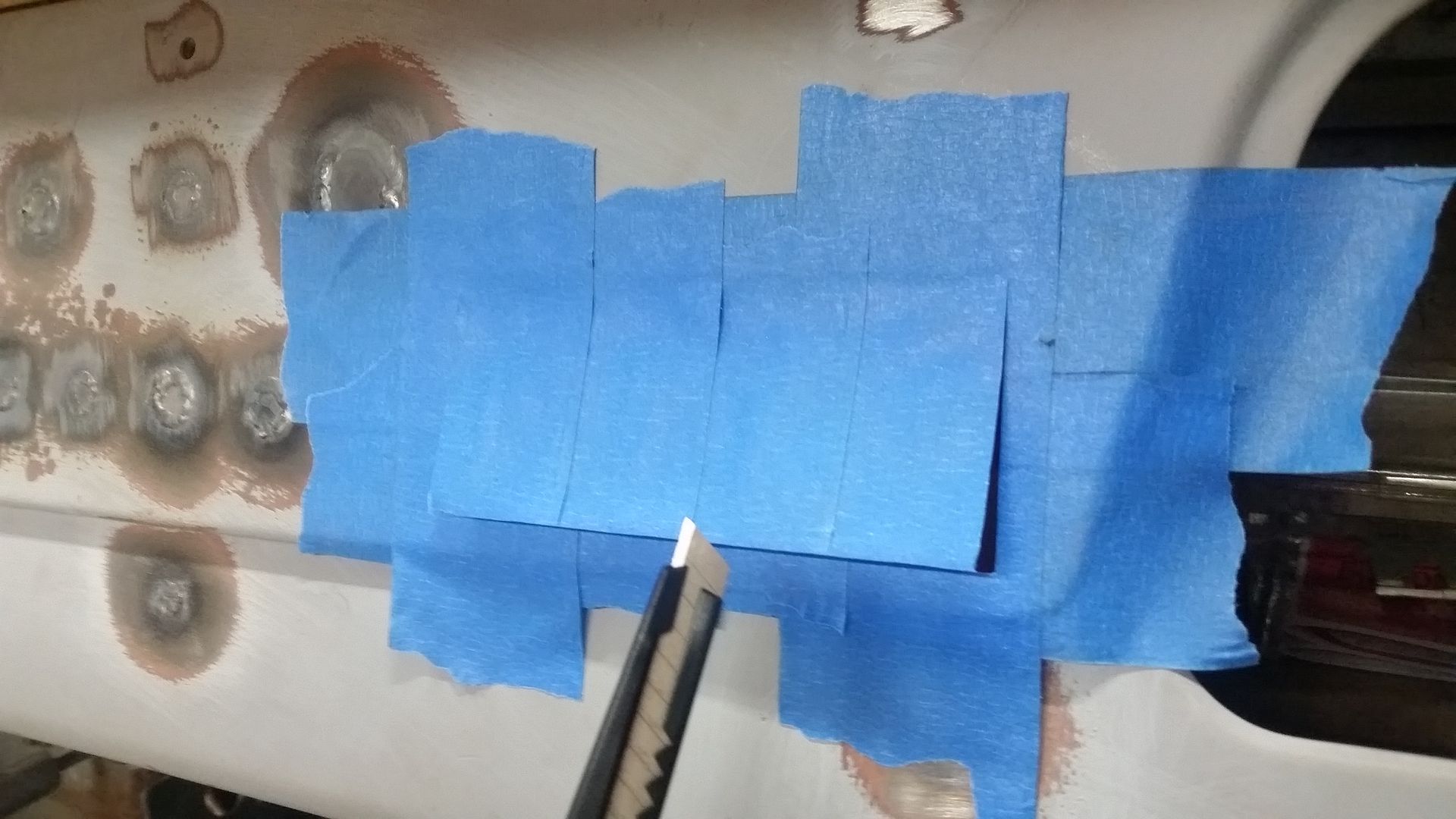- Thread starter
- #361

For round holes I have found it easiest to use some round bar stock that is the right diameter for the hole. I can turn the end of a short section of bar to fit exactly on the lathe if needed. You can also dill the holes out to the next stock size if you don't want to turn something, or if the hole is an odd punched shape. To make the proper thickness of material I slice off section in my bandsaw. With a little setup I can get .040 to .060 discs which are great for most sheetmetal patches.

To do this I set the little stop on the HF saw. The only real issue is when you need to cut off some stock once you set the stop to make more patches. For this, I just insert a scrap of bar stock under the part I need to cut off. This gets the part above the stop so you can maintain the fine/thin setting on the stop and not have to set it up again.

If you need to make a pattern for a large, or odd, hole coat the area in two layers of masking tape. If you can press from back all the better. Then cut out the shape you need with the thinnest razor edge you have. That template can then be stuck directly onto the metal you need to cut the template out of.

When you are done you get a patch that should fits like this that takes very little after cut cleanup.

This is what the dash looked like with all the holes welded shut prior to clean up. Lately, I am really liking the TIG welder for stuff like this other than having to be all out of position and needing 3 limbs to do everything. I ended up having to set the pedal on a milk crate to get it into a position I could run with my foot hanging out the door.
I still have a little more clean up work to do on things, but overall I am pretty happy.





































